Everything you need to know about Hawaiian luaus
A brief history of Hawaii luaus
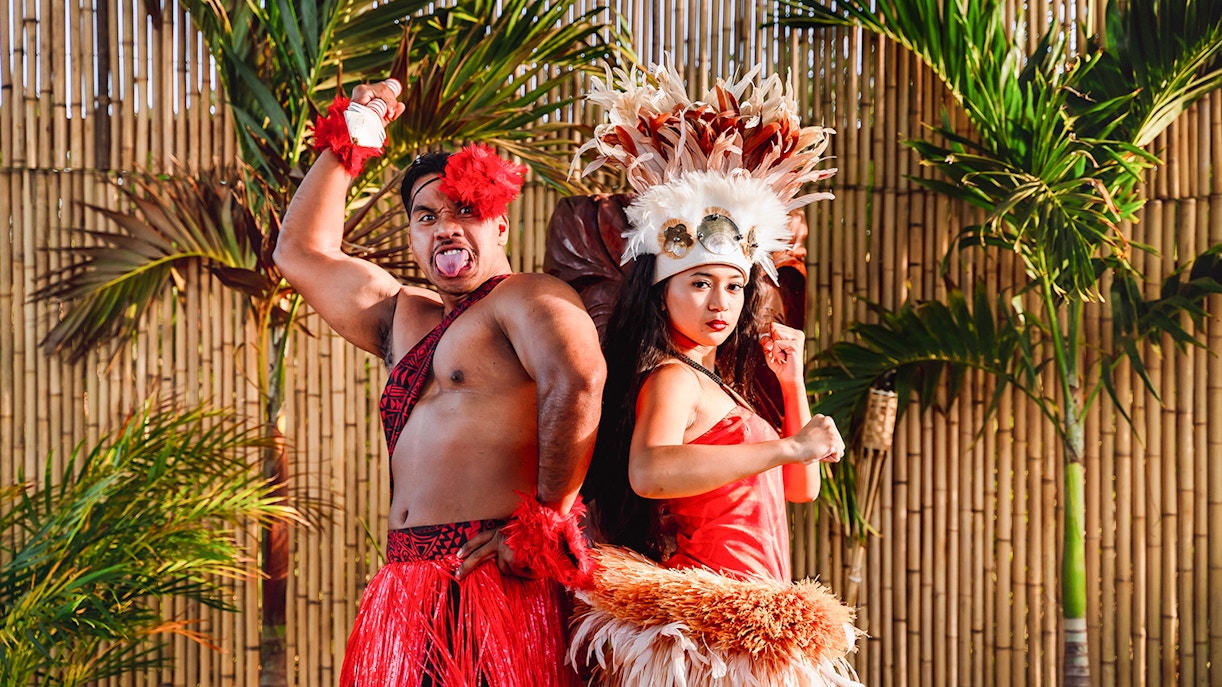
The first luau, as we know it, took place in 1819 under King Kamehameha II. He abolished the kapu system, which had been enforced earlier, where men and women had to dine separately, and women had to follow certain dietary and societal restrictions.
Luaus were originally held to commemorate milestones and victories, but over time, they evolved to become a celebration of Hawaiian culture overall. Luaus began to incorporate diverse elements of the diaspora of the people who moved to the islands of Hawaii, and this started to reflect in the cuisine, music, and performances.
Today, luaus have become a popular tourist attraction and offer a great way to celebrate and immerse yourself in the constantly changing Hawaiian culture through food, art, and music.
What to expect at a Hawaiian luau
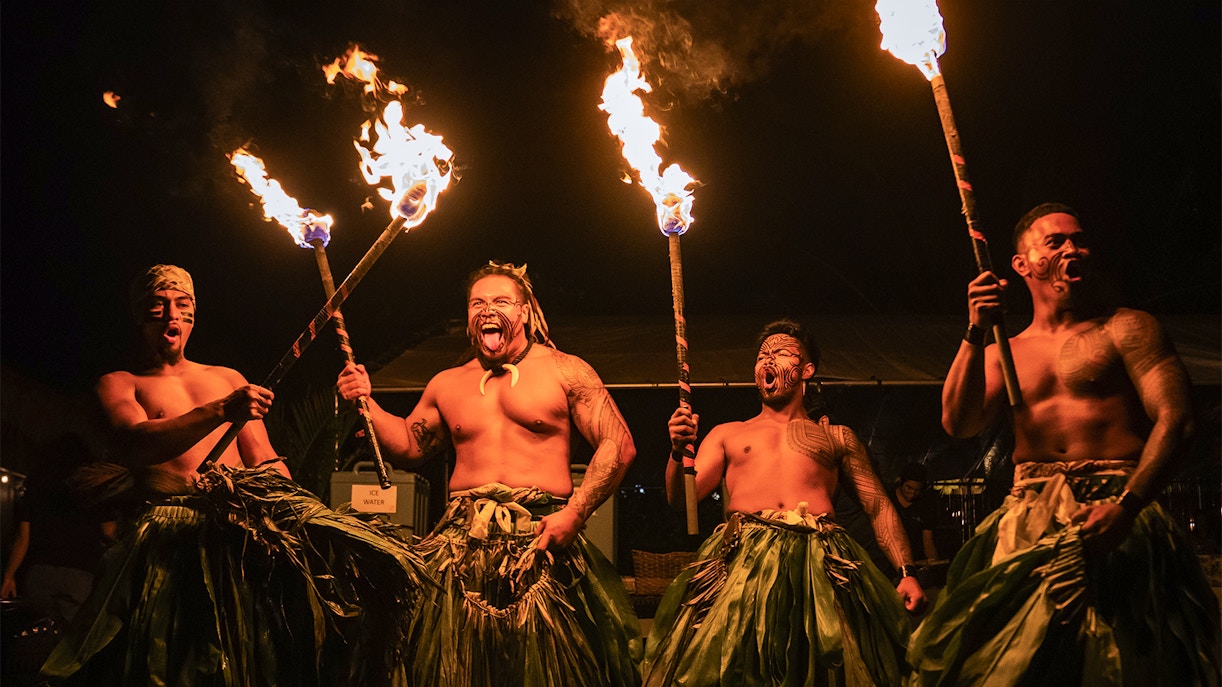
- Lei greeting: You’ll be welcomed with a lei, which is a wreath or a garland, made using fresh flowers, kukui nuts, or shells, as soon as you enter.
- A large spread of delicious Hawaiian food: Prepare to leave with your hearts and bellies full because a Hawaiian luau spread is a feast in every sense of the word.
- Engaging live show: The final live performance is filled with stories of the past, mythology, and more, with fire, hula, songs, and drumming, depending on the luau you choose. Be prepared to leave awestruck.
- Hula dancing: The traditional dance is used as a means of storytelling, and is often accompanied by ukulele music and percussion.
- Fire performances: Fire-knife dancing or poi ball performances leave you with a sense of thrill and wonder at the performers’ skills.
- Historic & cultural overview: You can experience Hawaiian culture firsthand during the luau and learn about their history and mythology through the show to get a deeper understanding of the people.
- A taste of Hawaiian hospitality: Hawaiians are known for their warm hospitality, and what better way to experience it than by celebrating with them?
The luau feast | An overview
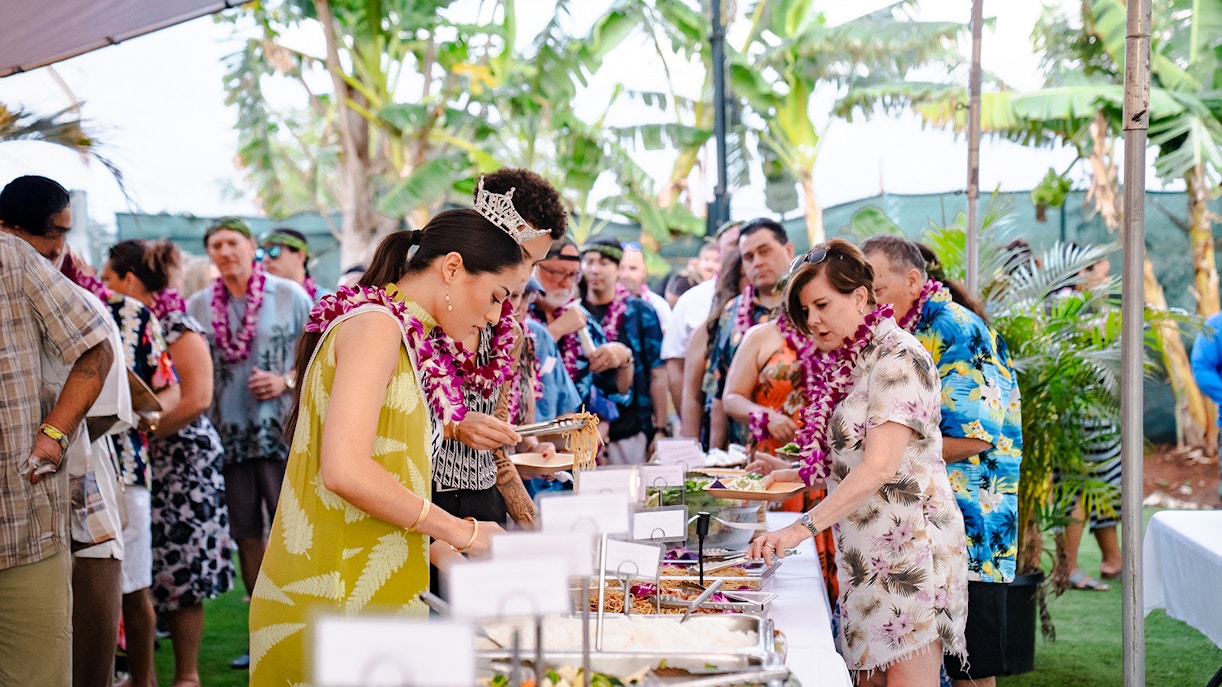
The feast is usually served buffet-style and includes a variety of Hawaiian dishes. Each menu is different depending on the luau you choose, and has its own unique take on the cuisine. You will also find modern adaptations or elements of global cuisine that have been incorporated into Hawaiian food in general.
A typical luau feast would include kalua pig or imu roasted pork, fresh fish, taro-based dishes, salads, fresh greens, fruit, coconut-based pudding or other similar desserts, and sides such as rice or noodles.
The live show | An overview
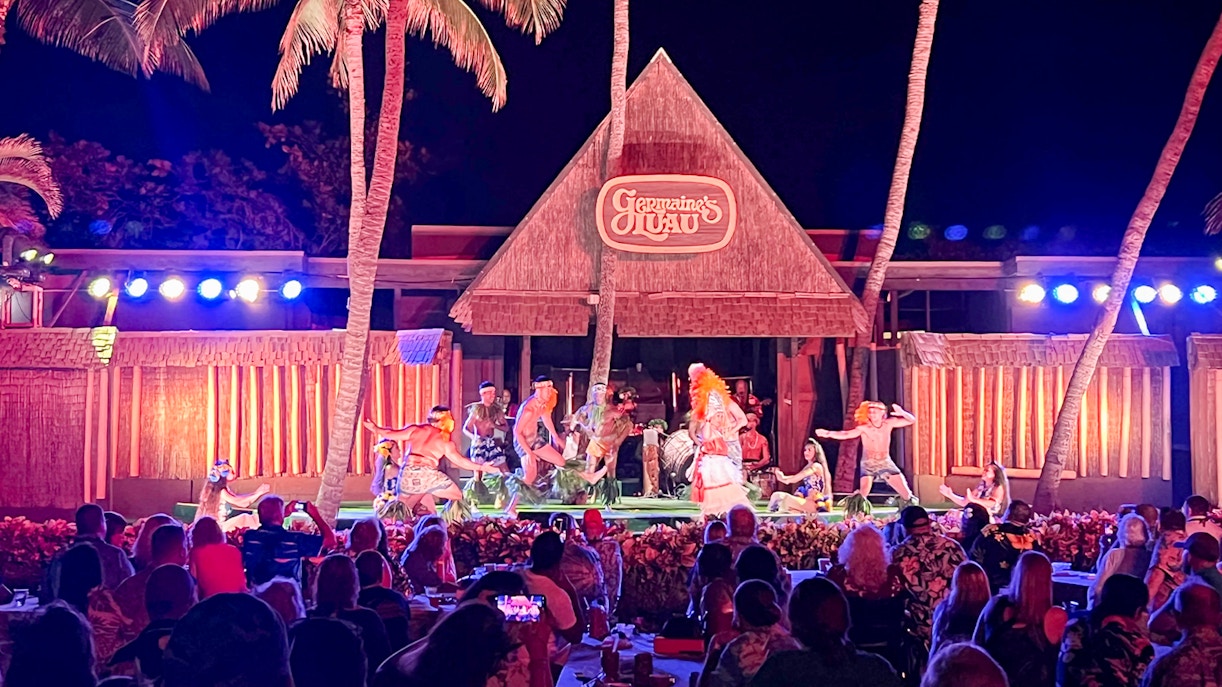
Each show tells a different story, using its own individual theme and style. They use the performance as a platform to showcase the history, mythology, and traditions of the Hawaiian and Polynesian people. You’ll witness chants, singing, dancing, fire shows, reenactments, and more being used (depending on the luau) to narrate their story. From warrior performances to Broadway-style shows, each luau experience is unique in itself.
The cultural activities & ceremonies at luaus
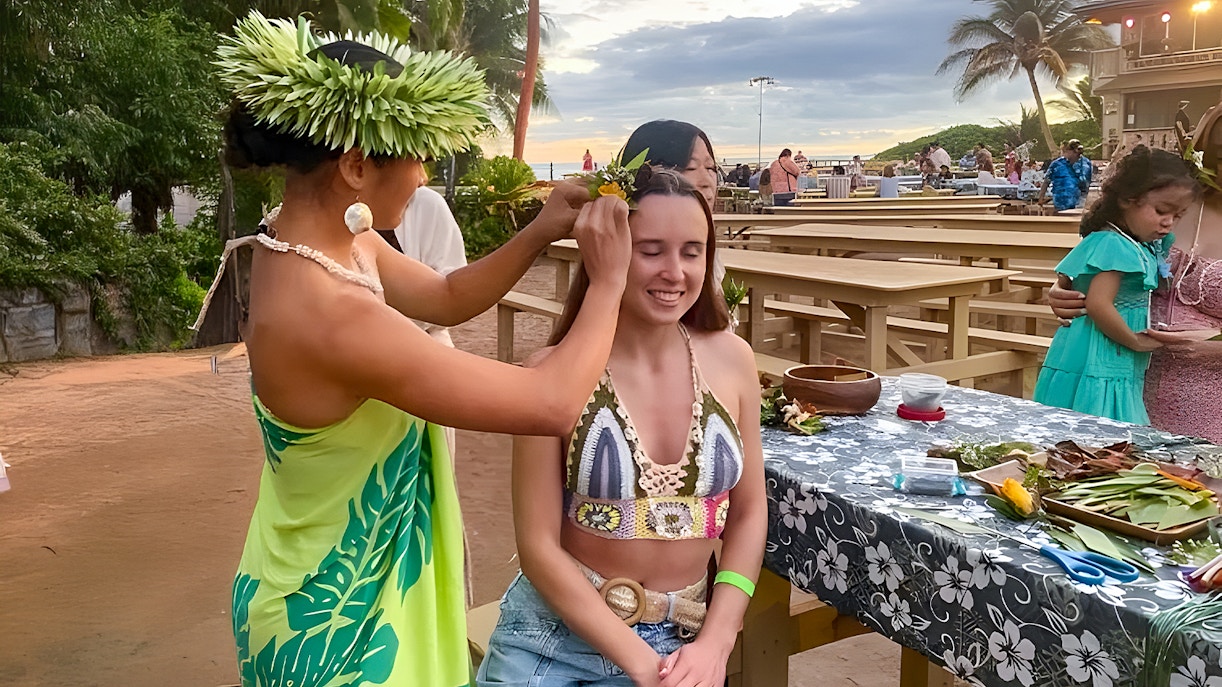
The celebration of Hawaiian culture and traditions at a luau includes many activities that you can participate in. Each luau is different, which means the activities and ceremonies will vary depending on the luau you choose.
- Conch shell: The sound of the conch shell signifies the beginning of the feast to the guests and precedes the Imu ceremony.
- Imu ceremony: The imu is the underground oven used to slow-cook the kalua pig. The ceremony involves unearthing the lid of the oven and removing the dish to serve it to the guests at the feast.
- Hula lessons: Learn the basics of hula dancing for a fun, lighthearted, and festive start to your evening.
- Interactive activities: Other interactive activities could include lessons on how to make fresh floral hairpieces (kupe’e), crack a coconut open whole, learn the basics of poi ball dancing, or even get temporary Moko tattoos (traditional Polynesian-inspired motifs).
Book Hawaii luau tickets
Frequently asked questions about Hawaii luaus
Yes, luaus have deep roots in Hawaiian history. Traditionally, they were held to mark important events like victories, births, and community milestones, blending spiritual rituals with feasting and dance.
Modern luaus celebrate Hawaii’s multicultural heritage. While they preserve traditional music, hula, and foods, they also showcase influences from Polynesian, Asian, and Western cultures through performances and cuisine.
Hula is a form of storytelling. Each movement, gesture, and chant conveys a story about Hawaiian legends, nature, or historical events, making it a vital part of any luau.
Sharing food is a symbol of unity and generosity in Hawaiian culture. The luau feast, often centered around traditional dishes, is a way to bond with others while honoring the land and its abundance.
Fire dancing is often included in luaus today, but originated from other Polynesian islands. It’s now a thrilling element that adds to the celebratory atmosphere.
The blowing of the conch shell (pu) traditionally announces the start of a ceremony or gathering. At luaus, it signals the beginning of festivities or the unveiling of the feast.
Yes, most luaus include interactive experiences like hula lessons, lei-making, or demonstrations of traditional crafts, offering guests a chance to engage with Hawaiian customs firsthand.
Originally intimate and ceremonial, luaus have evolved into large-scale cultural showcases that welcome both locals and visitors. While the spirit remains the same, the scale and presentation have adapted to modern audiences.
The word “luau” originally referred to a dish made with taro leaves and coconut milk. Over time, it came to represent the entire feast or celebration that included this dish.



